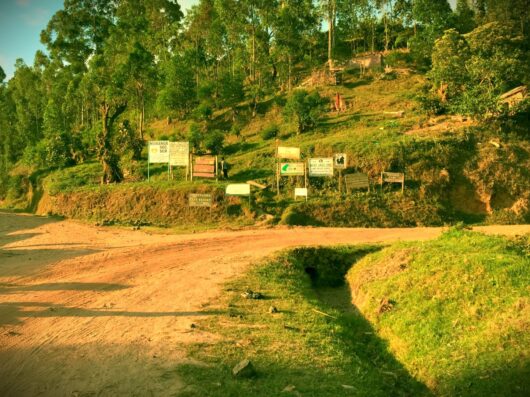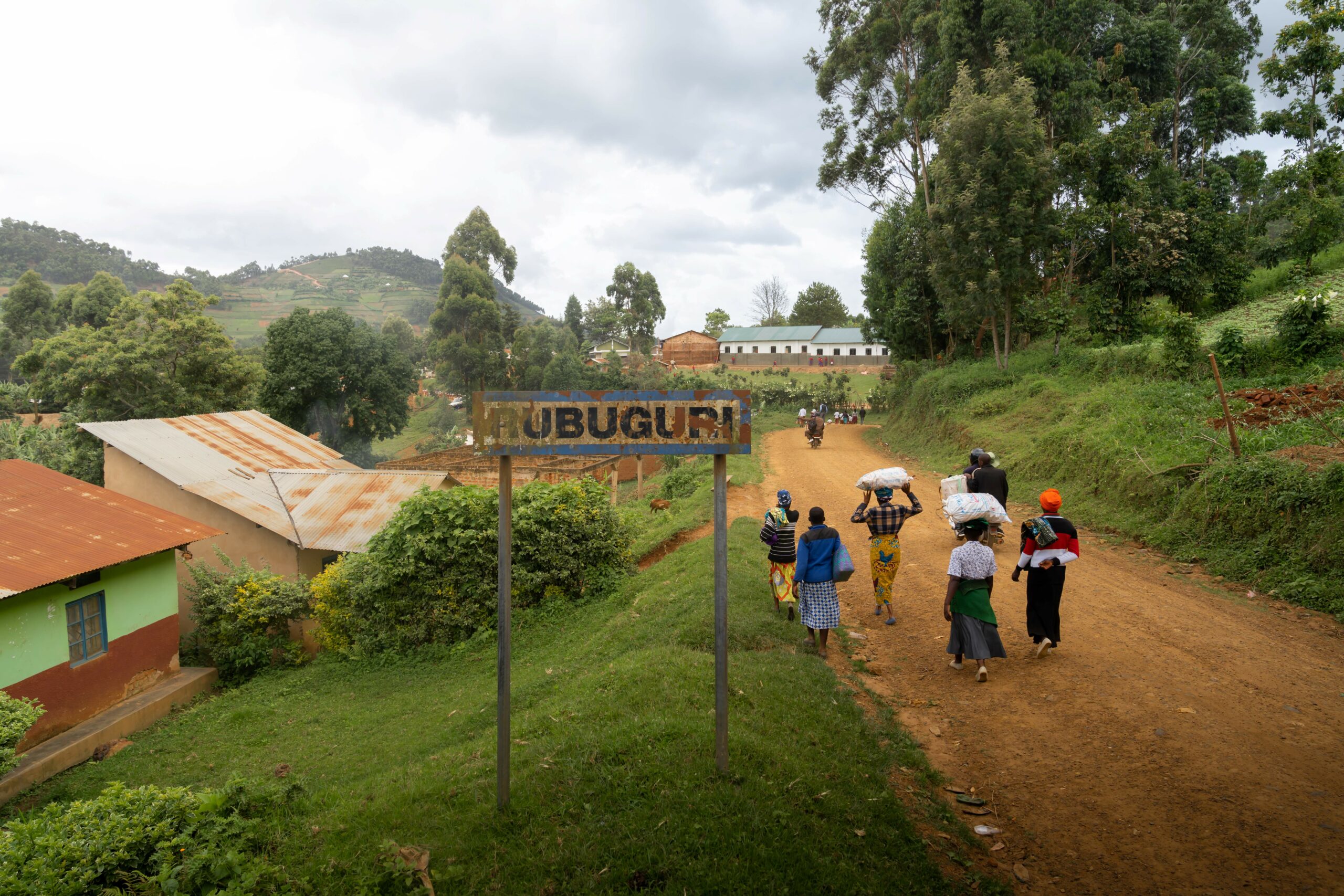A little local knowledge can make your journey unforgettable – for all the right reasons!
Karungi Camp is tucked away in the southwestern corner of Uganda, and getting here becomes part of the adventure!
The closest airport is in Kigali, Rwanda, and from there you can reach Karungi Camp in approximately 5 hours by public transport, or approximately 3.5 hours by private transport.
You can also get here via an overland trip from Uganda’s Entebbe airport, located outside Kampala. From Entebbe, you can reach Karungi in approximately 10-12 hours by public transport, or approximately 8-10 hours if you hire a car and drive yourself. Please reach out, we're happy to chat and advise.
Don’t worry, there are plenty of beautiful places to break up the journey, including Lake Mburo National Park, Murchison Falls, and Semliki, Kibale and Queen Elizabeth National Parks depending on your direction of travel.
If you are heading west from any of the National Parks in Uganda, it can be easier to reach Karungi Camp via the township of Muko. Karungi Camp is close to an hour from the turn off on a dirt “road” that has been graded and in much better condition than the “road” between Kisoro and Rubuguri.
Crossing from Rwanda to Uganda
Border crossings at Cyanika (pronounced chanika) are straightforward if you have all your visas sorted out prior to arrival.
An East Africa Tourist VISA will allow you entry into Rwanda, Uganda and Kenya. It takes only a few days to get and should be arranged prior to your first port of entry into any one of these countries. A single entry visa can be purchased as you enter Uganda - you will need $50 USD cash.
Typically, you will pass an uninterested Rwanda border control (right side) who check your passport and allow you through. You cross into Uganda and the customs house is on your left. You will “exit” Rwanda at the room in your right and “enter” Uganda at the room on your left. You will see the 2 lines.
Sometimes you are required to “register” at a little police hut that is behind you when you facing the customs house. If they send you to do that, it’s all good - you fill in their book, they hand you a tiny piece of paper (which appears to have no significance) which you then drop into a little basket when you are talking to the customs fellow exiting Rwanda.
There are people who will exchange money for you, so if you wanted to change USD to UGX - here is a good place to do that. Note though, it will be a high pressure sale, if you know your exchange rate and are confident at bargaining, do it! Do not be afraid to walk away if you don’t get the rate you want - they will often chase you and reduce their price to get the sale.
There is a fellow in Kisoro (town you will enter next) who can exchange money at a good rate as well.
Kisoro is your last point to access banks, so if you need to withdraw money from your account, you need to do it here. Almost everything in this region will be paid in cash.
Kabale to Karungi
Getting to Karungi Camp from Kabale
When leaving Kabale, drive on the tarmac toward Kisoro.
About 10 minutes past a tiny village called Muko (left side of the road) you will reach an intersection with a lot of signs for lodges in the area (there is no Karungi sign here however) plus boda boda’s etc.
All local taxis stop here as well. Turn right onto the dirt road. This dirt road leads the rest of the way to Karungi Camp.
There are a couple of points where the road does split - always follow the larger more well travelled path which is to your right - with an exception (there is always one!). Immediately after crossing the river, a steep road on your right near a whole lot of signs, Do not take this one, stay on the main road - Karungi is 20 mins in front of you.
Karungi's driveway is on the left, and you will see our sign immediately in front of the Rubuguri village sign.
Kisoro to Karungi
Getting to Karungi Camp from Kisoro
Note - this road is under construction, it is currently being widened and levelled. There is often earth moving equipment on this road and has been more susceptible to rock slides during the last rainy season. Do ensure you schedule time for delays 🙁
Leave Kisoro via the Mutorere Hospital, you will be on tarmac for the first 5 minutes and then you will begin to experience rural Uganda roads – affectionately known as the African Massage.
As you move around Uganda, you will notice there is an over abundance of literally everything, signs included! You will reach your first overwhelming sign 'experience' about 15 minutes down the road - turn right and head up the hill.
As you pass through this section of villages ensure to keep a look out both sides of the car, at one point you will be able to see Lake Mulehe and Lake Mutanda at the same time (opposite sides).
This road will lead you all the way to Rubuguri village where Karungi Camp is located. You will pass through little villages, cross the Valley floor, see how local bricks are made, be astounded by women carrying their wares and amazed by the scenery as you drive along the edge of the mountains of the Albertine Rift.
Not long after you see all the bricks being made, and witnessed Lake Mulehe (right) the road will slope down into Kabahundi Village and you will continue straight through the four way intersection. The road up out of this village can be a little rocky and slippery during the rainy season.
As you wind along the edge of the Albertine Rift, you will catch glimpses of the Virunga mountains (slightly behind you), a stunning acacia tree, and little waterfall's.
Once you come up out of the valley approaching Rubuguri, you will reach a T intersection, again filled with signs - turn right, take it slow through here, the road can be quite rocky and uneven.
As you turn right, look to your left, the bustling metropolis of Rubuguri will lay before you.

Karungi is on the other side of the village, you will drive all the way through, and veer out of the village on your right as you approach the town sign, you will find the Karungi driveway.
A private car will take an hour or so depending on the weather (longer if it is/was raining recently).
A small car will typically make it, however we have had some mudslides in 2018 which have made travel at various times slightly more tricky and requiring a 4WD or a SuperCustom.
A boda boda is slightly more pleasant for those comfortable on motorbikes, a little faster and cheaper, but not particularly useful if you are travelling with any more luggage than a backpack!
Please reach out to us and keep in contact - we can help you navigate as time approaches.
Public Transport
Feeling adventurous? Want to experience public transport, African style?
Karungi Camp can be reached by a combination of public and private transport from most places.
It can be quite an adventure and very entertaining at times, however, by the same token, it can be frustrating if you are trying to get anywhere in a hurry or tiring if you are not a confident negotiator.
It will always take longer and be a little cheaper, however it is not recommended for everyone.
Please reach out to us, and we can help decide if it's for you!
Helpful Tips
Some tips to keep in mind when you’re navigating transport in Uganda:
